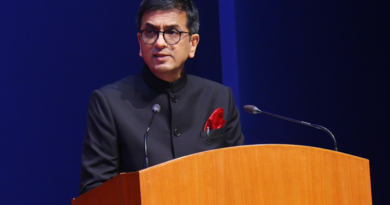Supreme Court Verdict on Section 6A: A Serious Challenge to the Citizenship Amendment Act (CAA)
(Judicial Quest News Network)
The recent Supreme Court ruling regarding Section 6A of the Citizenship Act, 1955, raises critical questions about the constitutionality of the Citizenship Amendment Act (CAA), particularly its provision for granting citizenship exclusively to non-Muslim minorities. While the court did not address the legal intricacies surrounding the CAA directly, its judgment invites scrutiny of the CAA’s cutoff date of December 31, 2014, which conflicts with the March 25, 1971, cutoff established under Section 6A.
In Assam, various organizations are now calling for the CAA to be reevaluated in light of the court’s decision, arguing that extending the cutoff date undermines the original framework of the Assam Accord. The Accord was intended to address immigration from Bangladesh post-1971, irrespective of religion, while the CAA permits non-Muslim migrants fleeing persecution in their home countries to seek citizenship based on a timeline extending beyond 1971.
The ruling has also prompted discussions about the CAA’s perceived discriminatory nature, as it specifically benefits non-Muslim minorities, a stance that has faced challenges in the Supreme Court for being unconstitutional. Justice Suryakant, in his judgment, noted that cultural differences among Assam’s residents do not inherently pose a threat to the region’s original inhabitants.
Furthermore, the Supreme Court’s recognition of Section 6A’s protections, which aim to preserve the cultural identity of Assamese people, raises further implications for the CAA. In 2019, the central government formed a committee to address widespread protests against the CAA, resulting in recommendations that aim to define the Assamese community and its heritage. Advocate Adeel Ahmed represented Assam Sanmilita Mahasangh & Ors
The political ramifications of the Supreme Court’s ruling are significant. Opposition parties are seizing the moment to reignite debates over the cutoff dates for citizenship, arguing that the original date established in the Assam Accord has been politicized over time. They caution against any attempts by the BJP government in Assam to manipulate these dates for divisive political gains.
As tensions continue to simmer in Assam over citizenship issues, the Supreme Court’s ruling may provide an opportunity for a more equitable and historically grounded approach to citizenship in the region. Stakeholders emphasize the need for the Assam Accord to be honored not only in principle but also in practice, ensuring its relevance for future generations.
In summary, the Supreme Court’s recent judgment serves as a crucial turning point in the ongoing debate over citizenship in India, highlighting the need for a thoughtful and inclusive approach to address the complexities of identity and belonging in Assam and beyond.
The Assam Accord was signed on August 15, 1985, by both the Union and state governments, along with the representatives of the agitators. The agreement established March 24, 1971, as the cutoff date for identifying foreigners, as outlined in Clause 5 of the memorandum of settlement. In response, Parliament amended the Citizenship Act of 1955, adding Section 6A. This amendment aligned with the Indian government’s policy decisions based on international agreements, specifically the Indira-Mujib Treaty of 1972 and the Nehru-Liaquat Pact of April 8, 1950. All parties involved, including the agitators, accepted this framework.
The amendment was not only a reflection of the 1985 Memorandum of Settlement but also aimed at implementing the two international treaties. Under Article 253, Parliament holds the sovereign authority to enact laws for any part of India to fulfil treaty obligations. Additionally, Article 51 mandates the state to uphold respect for international law and treaties. Therefore, the legitimacy and constitutional validity of Section 6A of the Citizenship Act, as amended in 1986, and the Assam Accord cannot be legally challenged.




